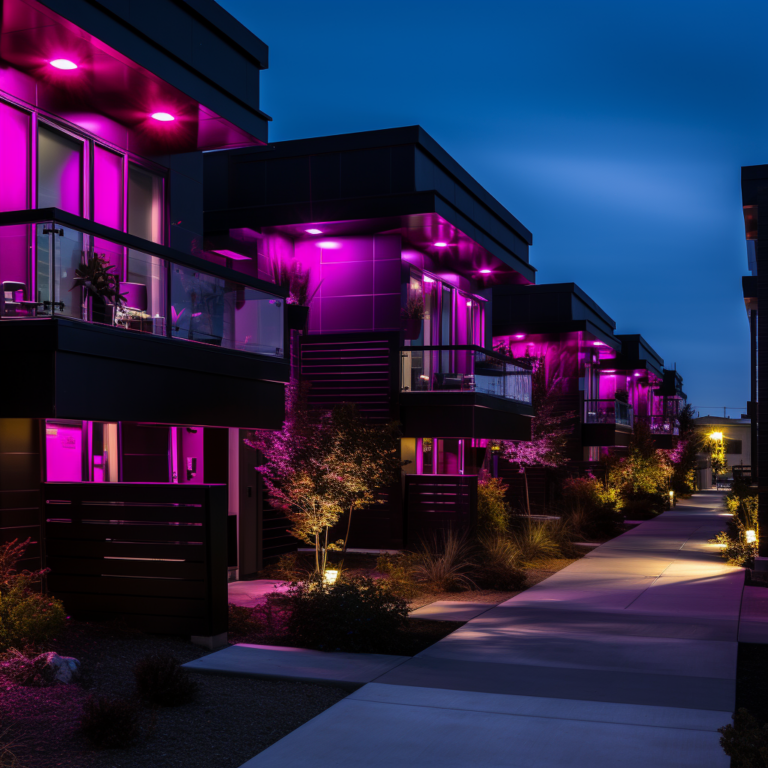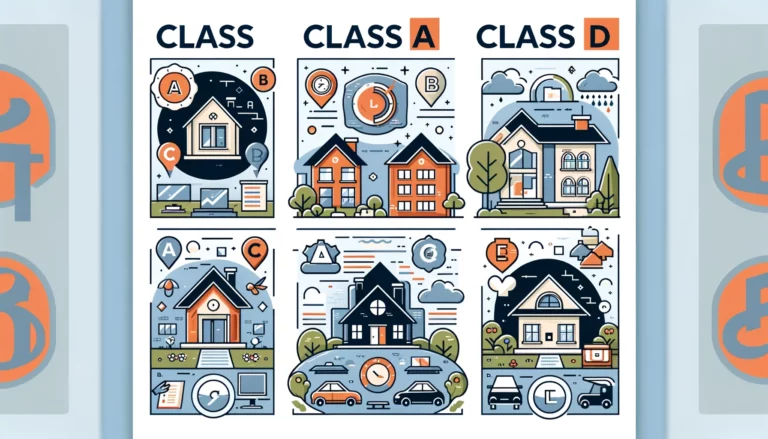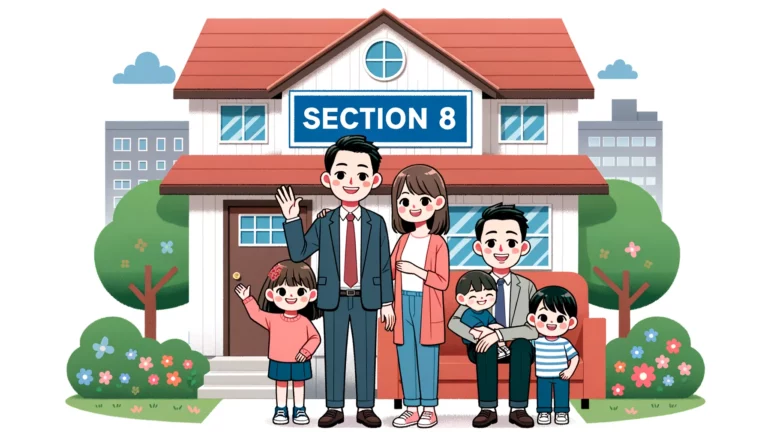The Ultimate Guide to Multifamily Apartment Property Management in Las Vegas
Brief overview of multifamily apartment property management in Las Vegas
Welcome to the bustling world of real estate in Las Vegas, a city renowned not just for its vibrant nightlife and casinos, but also for its booming property market.
If you’re stepping into the realm of multifamily apartment property management in Las Vegas, you’re in for an exciting yet challenging journey. This sector offers immense opportunities for revenue generation, but it also comes with its own set of complexities that require strategic management.
Multifamily properties are a popular choice for both investors and renters in Las Vegas. They offer the advantage of housing multiple tenants, which can translate to multiple revenue streams for property owners. However, managing such properties is not as straightforward as it may seem. From tenant relations and maintenance to legal compliance and financial management, there are various facets that need your attention.
That’s where this guide comes in. Designed as a comprehensive resource, this blog post aims to navigate you through the intricacies of multifamily apartment property management in Las Vegas. Whether you’re a seasoned property manager or a newcomer to the field, this guide will equip you with the knowledge and insights you need to succeed.

The Importance of Customer Service in Multifamily Property Management
In the competitive landscape of Las Vegas real estate, customer service can be a game-changer for multifamily property management. While the city’s allure attracts a diverse range of tenants, keeping them satisfied and loyal is a different ball game altogether.
Exceptional customer service can not only enhance tenant satisfaction but also contribute to long-term relationships, which is crucial for the stability and growth of your property management business.
Customer service in this context goes beyond just addressing complaints or conducting repairs. It encompasses a holistic approach to tenant well-being.
This means timely communication, transparency in transactions, and even small gestures like welcoming new tenants with a small gift or organizing community events. These actions contribute to a positive living environment, encouraging tenants to renew their leases and even become advocates for your property.
In a city like Las Vegas, where word-of-mouth and reputation can make or break your business, focusing on customer service is not just an option; it’s a necessity. It sets you apart from the competition and adds a layer of trust and reliability that tenants highly value.

Navigating Amenities in Multifamily Property Management: A Comprehensive Guide
In the ever-competitive field of multifamily property management, amenities often serve as a significant selling point for potential tenants. However, what happens when these amenities are under construction or temporarily unavailable? It’s crucial for property managers to know how to navigate these challenges effectively.
This guide will delve into key strategies for handling such situations, from employing the “Feel-Felt-Found” technique for addressing tenant complaints to focusing on the positive aspects of your community. We’ll also explore how to shift the conversation when amenities become the sole point of comparison, ensuring that you can maintain tenant satisfaction and secure leases even when not everything is picture-perfect.
Key Points To Remember about Customer Service and Amenities:
- No Apartment Community is Perfect: No community is perfect and renovations or construction delays and things breaking are the norm.
- Amenities are Not the Only Selling Point: While amenities like a golf simulator or a pool may be significant, they are not the only reason someone would want to live in a particular community. Property managers should not let complaints about these monopolize their attention.
- Feel-Felt-Found Technique: Introduce a sales technique called “Feel-Felt-Found” to handle complaints or concerns about amenities. For example, “I understand how you feel about the golf simulator delay, many of our residents felt the same way, but what they found is they still love living here for other reasons.”
- Focus on the Positives: Property managers are encouraged to focus on the positive aspects of their community, like location, staff, and other amenities that are available, rather than what’s lacking or under construction.
- Sell Yourself on Your Community: The video suggests that property managers should be able to sell themselves on their own community. They should be able to list at least five great things about their community that make it a desirable place to live.
- Addressing Specific Concerns: The video provides strategies for addressing specific concerns that potential tenants might have, such as the unavailability of a golf simulator. It suggests turning the conversation towards other positive aspects of the community.
- All Things Being Equal: When a prospect compares your community to another based on a specific amenity, we suggest using the phrase “all things being equal” to shift the focus. For example, “All things being equal, if we had the golf simulator now, would it make sense to sign the lease?”
Mastering the “Feel-Felt-Found” Technique in Tenant Communications
The “Feel-Felt-Found” technique is an invaluable tool for property managers dealing with tenant complaints or concerns, especially those related to unavailable or under-construction amenities. The approach involves three steps: first, acknowledge how the tenant feels about the issue; second, share a similar sentiment that others have felt in the same situation; and third, guide the conversation towards a resolution or positive aspect that those individuals found.
For instance, if a tenant is frustrated about a delayed gym opening, you might say, “I understand how you feel about the gym not being ready. Many of our residents felt the same way. However, what they found is that our community offers various other amenities and features that make living here enjoyable.” This technique not only validates the tenant’s feelings but also subtly shifts the focus towards the positive aspects of your property.
Mastering the Takeover and Due Diligence Phases in Multifamily Apartment Management
The management of multifamily apartments is a multifaceted endeavor that requires a keen eye for detail, especially during the initial stages of takeover and due diligence. These critical phases lay the groundwork for the property’s long-term success and can significantly impact its profitability and reputation. In this blog post, we’ll delve into the intricacies of the takeover and due diligence processes, offering insights and best practices for property management companies and sponsors alike.
The Takeover Process: More Than Just a Handover
The takeover process is not merely a change of hands; it’s a comprehensive transition that involves gaining control over various aspects of the property, including staff, tenants, vendors, and contracts. Property management companies play a pivotal role in this phase, ensuring a smooth transition that minimizes disruptions and maximizes efficiency.
The Role of the Sponsor in the Takeover
While property management companies handle the bulk of the takeover process, the sponsor (or property owner) is not entirely hands-off. They are responsible for plugging in gaps, such as legal formalities or specific negotiations, to ensure a seamless transition. Their involvement ensures that the takeover aligns with the property’s long-term goals and investment strategies.
Due Diligence: The Art of Validation
Due diligence is the other side of the coin, focusing on validating the property’s worth and identifying potential risks. This involves a series of steps like lease audits, unit walks, and other forms of validation. Skipping or rushing through this phase can lead to costly mistakes, making it imperative for both the management company and the sponsor to be thorough.
Lease Audits: The Backbone of Due Diligence
Lease audits are an essential component of due diligence. They involve a meticulous review of all existing leases to ensure their accuracy and completeness. Any discrepancies found can be red flags that require immediate attention.
Unit Walks: The Physical Check
Unit walks provide a tangible sense of the property’s condition. They are crucial for identifying maintenance issues, ensuring tenant satisfaction, and assessing the overall state of the property. These walks offer a snapshot of what needs immediate attention and what can wait, helping to prioritize tasks post-takeover.
The Synergy Between Takeover and Due Diligence
The takeover and due diligence processes are not isolated events but interconnected phases that feed into each other. A well-executed takeover sets the stage for effective due diligence, and thorough due diligence ensures a successful takeover. This synergy is crucial for setting the property on a path to long-term success.
Conclusion On Takeover
Mastering the takeover and due diligence phases is essential for anyone involved in multifamily apartment management. These processes lay the foundation for the property’s future, impacting everything from tenant satisfaction to profitability. By understanding the nuances and best practices involved, property management companies and sponsors can ensure a smooth transition and a successful long-term strategy.

Navigating Staff and Incident Management in Multifamily Apartment Complexes
Managing a multifamily apartment complex is no small feat, especially when it comes to staff and incident management. Whether it’s a minor dispute between tenants or a more serious event like a fire, effective management is crucial. In this blog post, we’ll explore the importance of staff behavior and the protocols for handling incidents, both of which are vital for maintaining a safe and welcoming environment.
The Role of Staff in Creating a Positive Environment
The staff at a multifamily apartment complex often serve as the face of the property. From the way they dress to how they greet and follow up with potential tenants, every action counts. Well-dressed staff who greet properly not only make a good first impression but also set the tone for the entire tenant experience.
The Importance of Staff Training
Training is essential for ensuring that staff are equipped to handle various situations, from routine inquiries to emergencies. Regular training sessions can help staff understand the importance of their roles and how their actions can impact the property’s reputation and safety.
Incident Reports: A Critical Component
When incidents occur, such as crimes or fires, it’s crucial to have a standardized incident report that staff must fill out. These reports are not just bureaucratic formalities; they are essential for liability and insurance claims. Proper documentation can protect the property management company from potential legal issues.
The Procedure for Filling Out Incident Reports
Filling out an incident report should be a structured process. Staff should be trained to include all relevant details, such as the time and nature of the incident, the parties involved, and any actions taken. This information is crucial for both immediate response and future reference.
Insurance Claims and Incident Reports
Incident reports often serve as the basis for insurance claims. In the case of property damage or personal injury, these reports provide the necessary documentation to support a claim. Therefore, it’s essential that they are filled out accurately and promptly.
Staff Follow-Up: The Aftermath of an Incident
Once an incident has been reported and documented, the staff’s role doesn’t end there. Follow-up actions may include contacting emergency services, informing property management, and communicating with affected tenants. This ensures that the situation is fully resolved and helps in preventing similar incidents in the future.
Conclusion On Incident Management
Staff and incident management are integral aspects of running a multifamily apartment complex. From making a good first impression to handling emergencies effectively, the staff’s role is multifaceted. Proper training and protocols, especially for incident reporting, can make a significant difference in how smoothly a property operates and how safe and satisfied tenants feel.
How to Choose the Right Property Management Company for Your Multifamily Property
Selecting the right property management company is a pivotal decision for any multifamily property owner. The company you choose will have a significant impact on the day-to-day operations, tenant satisfaction, and ultimately, the profitability of your investment. In this blog post, we’ll explore key considerations for making an informed choice, from specialization and experience to the value of secret shopping.
Importance of Specialization
When it comes to property management, one size does not fit all. Different classes of properties require different types of expertise. For instance, managing a Class A property involves different challenges and expectations compared to a Class C property. Therefore, it’s crucial to choose a property management company that specializes in the class of property you own.
Experience in the Sub-Market
Beyond general expertise in managing a particular class of property, the company should also have experience in the specific sub-market where your property is located. Local market knowledge can be invaluable for setting competitive rental rates, understanding tenant needs, and complying with local regulations.
The Power of Secret Shopping
One of the most effective ways to evaluate a property management company is through secret shopping. This involves posing as a prospective tenant to assess the company’s customer service, responsiveness, and overall effectiveness. The insights gained from this exercise can provide a unique perspective on how the company interacts with tenants and manages the property.
What to Look for During Secret Shopping
During the secret shopping exercise, pay attention to various aspects such as the speed of response to your inquiries, the quality of customer service, and the condition of the property. Take note of whether the staff are professional, knowledgeable, and courteous. These factors can give you a comprehensive understanding of the company’s capabilities.
Asking the Right Questions
When you’re in the selection process, don’t hesitate to ask questions. Inquire about their experience, the services they offer, and their approach to property management. You can also ask for references or case studies to get a better sense of their track record.
Red Flags to Avoid
Be cautious of companies that are reluctant to provide references or are vague about their services and fees. Transparency and openness are key traits of a reliable property management company.
Conclusion About Choosing the Right Property Managers
Choosing the right property management company is a critical step in ensuring the success of your multifamily property. Specialization, experience, and effective evaluation methods like secret shopping are essential factors to consider. Making an informed choice can save you time, money, and a lot of headaches down the line.
Expert Property Management at Competitive Prices
Dive into a world where your real estate investments flourish under expert care. At Grand Prix Realty, we blend market-savvy strategies with personalized attention to ensure your properties achieve their full potential. Explore our property management pricing page to see how our tailored services can transform your real estate experience, delivering value and peace of mind.
Navigating Weekly and Monthly Interactions in Multifamily Property Management
Effective communication between property owners and management companies is the cornerstone of successful multifamily property management. Regular interactions not only keep the owner updated but also provide an opportunity for proactive problem-solving. In this blog, we delve into the typical weekly and monthly interactions that form the communication backbone in property management.
The Importance of Weekly Calls
Weekly calls between the property owner and the management company serve as a touchpoint to discuss ongoing issues, updates, and future plans. These calls usually last between 30 minutes to an hour and are crucial for maintaining an open line of communication. They allow both parties to be on the same page and tackle any challenges head-on.
What to Discuss in Weekly Calls
The agenda for these weekly calls can vary but generally includes updates on tenant issues, maintenance work, financials, and any other immediate concerns. It’s a time for the property owner to ask questions, seek clarifications, and provide directions, ensuring that the management company is aligned with their goals and expectations.
The Role of Monthly Reports
In addition to weekly calls, monthly reports are standard practice in property management. These reports provide a comprehensive overview of the property’s performance, including financial statements, occupancy rates, and maintenance updates. They serve as a valuable tool for assessing the effectiveness of the management company and for long-term planning.
Additional Communications
While weekly calls and monthly reports are the norm, additional emails and phone calls are often necessary. These could be triggered by various factors such as urgent maintenance issues, tenant complaints, or unexpected vacancies. The flexibility to have extra interactions as needed ensures that nothing falls through the cracks.
Benefits of Regular Interactions
Regular interactions between the property owner and management company offer several benefits. They foster a sense of partnership, enhance transparency, and facilitate quick decision-making. This consistent communication ensures that both parties are actively involved in the management process, leading to better outcomes for tenants and the property as a whole.
Challenges and Solutions
While regular interactions are beneficial, they can also be time-consuming. Property owners should ensure that these meetings are focused and agenda-driven to make the most of the time spent. Utilizing digital tools for sharing reports and updates can also streamline the process.
Conclusion On Communication Between Landlords and Property Managers
Regular weekly and monthly interactions are vital in multifamily property management. They serve as a structured yet flexible framework for effective communication between the property owner and the management company. By maintaining this rhythm of interaction, property owners can stay closely involved in the management process, ensuring that their investment is in good hands.
Fostering Questions and Community Engagement in Property Management
In the ever-evolving landscape of property management, staying connected with your community is more important than ever. Whether you’re a property owner, manager, or a resident, fostering an environment that encourages questions and community engagement can significantly impact the success and harmony of a property. In this blog, we’ll explore why questions and community engagement are crucial and how they can go beyond the realm of property management.
The Power of Questions
Questions are the lifeblood of understanding and improvement. They provide valuable insights into what residents are concerned about, what they value, and what changes they’d like to see. For property managers, encouraging questions means opening the door to feedback that can lead to actionable improvements and a more harmonious living environment.
Community Engagement: More Than Just a Buzzword
Community engagement is often thrown around as a buzzword, but its implications are profound. Engaged communities are more likely to have residents who respect communal spaces, adhere to rules, and contribute to a positive living environment. For property managers, an engaged community can make the job not just easier but also more fulfilling.
Beyond Property Management
While the primary focus may be on managing the property effectively, the scope of engagement often goes beyond that. Topics like community events, local news, and even broader societal issues can come into play. Being open to discussing various topics makes the community more cohesive and helps residents feel more connected, not just to their home, but also to the world around them.
The Role of Digital Platforms
In today’s digital age, online platforms can play a significant role in fostering questions and community engagement. Whether it’s through social media groups, community forums, or the property’s own app, these platforms can provide a space for residents to ask questions, share experiences, and stay engaged.
Challenges and Solutions
While encouraging questions and engagement has its benefits, it also comes with challenges such as managing negative feedback or dealing with sensitive issues. The key is to approach these challenges with transparency and a willingness to find solutions, which further enhances the community’s trust in the management.
Conclusion About Community Engagement
Questions and community engagement are not just ancillary aspects of property management; they are central to creating a thriving, harmonious living environment. By encouraging open dialogue and community involvement, property managers can enrich the resident experience and add a layer of depth that goes beyond the bricks and mortar of property management.

Recent Trends in Las Vegas Multifamily Property Management
The multifamily property management landscape in Las Vegas is undergoing some significant changes, influenced by both technological advancements and shifts in renter expectations. Here are some of the most noteworthy trends that property managers, investors, and tenants should be aware of:
- Smart Home Integration: As technology continues to evolve, more renters are expecting smart home features in their apartments. From smart locks to intelligent HVAC systems, these features not only provide convenience but also add an extra layer of security.
- Sustainability Initiatives: With an increasing focus on sustainability, many property managers are implementing eco-friendly measures like solar panels, energy-efficient appliances, and even electric vehicle charging stations to attract environmentally-conscious renters.
- Virtual Tours and Leasing: Especially accelerated by the COVID-19 pandemic, the use of virtual tours for property viewing has become more prevalent. This trend is likely to continue as it offers convenience for potential tenants and reduces the time units stay vacant.
- Community Amenities: Gone are the days when a swimming pool and a gym were considered luxurious amenities. Modern renters in Las Vegas are looking for properties that offer co-working spaces, pet-friendly facilities, and even on-site health and wellness centers.
- Data-Driven Management: The use of data analytics in property management is on the rise. By analyzing data on tenant behavior, maintenance requests, and even local real estate trends, property managers can make more informed decisions.
- Increased Focus on Tenant Experience: With the rental market becoming increasingly competitive, property managers are going the extra mile to enhance the tenant experience. This includes quicker response times, regular community events, and personalized services.
Understanding and adapting to these trends is crucial for anyone involved in multifamily property management in Las Vegas. Not only do they influence tenant satisfaction and retention, but they also impact the overall profitability and success of the property.
Common Misconceptions About Property Management
When it comes to property management, especially in the multifamily sector, there are several myths and misconceptions that can mislead both property owners and tenants. Here are some of the most common fallacies that need to be debunked:
- Property Management is Just About Collecting Rent: One of the most prevalent misconceptions is that the role of a property manager is merely to collect rent. In reality, property management encompasses a wide range of responsibilities, from maintenance and repairs to tenant relations and legal compliance.
- High Turnover is Always Bad: While it’s true that high turnover can be costly, it’s not always a negative indicator. Sometimes, turnover allows for rent increases and property upgrades, which can ultimately lead to higher profitability.
- All Property Managers are the Same: Many people think that all property management companies offer the same services and expertise. However, different companies have different specializations, from Class A luxury properties to more affordable Class C buildings.
- Technology Can Fully Replace Human Interaction: With the rise of property management software and smart home technology, some believe that technology can entirely replace human interaction. While technology can streamline many processes, the human element is still crucial for customer service and conflict resolution.
- Cheaper is Better: Often, property owners opt for the management company that offers the lowest fees. However, you get what you pay for. A cheaper company may not provide the level of service that a slightly more expensive, but more experienced, company would offer.
- Tenants are Always the Problem: It’s a common stereotype that issues in property management are usually the fault of difficult tenants. While problematic tenants do exist, many issues arise from poor management practices or lack of preventive maintenance.
- Legal Expertise is Not Necessary: Some property owners think they can handle legal matters related to their property on their own. However, property management often involves complex legal issues that require specialized knowledge.
By understanding the realities behind these misconceptions, property owners and managers can make more informed decisions and foster better relationships with tenants. This is particularly important in a competitive and evolving market like Las Vegas.
Benefits of Effective Multifamily Apartment Property Management
Managing a multifamily apartment property is no small feat, but when done effectively, the benefits are numerous and far-reaching. Here are some of the key advantages:
- Streamlined Operations: A well-managed property operates seamlessly. From timely maintenance schedules to efficient rent collections, streamlined operations make life easier for both tenants and owners.
- Enhanced Tenant Experience: A focus on tenant satisfaction is crucial. Happy tenants are more likely to renew their leases and recommend the property to others, creating a positive cycle of tenant retention and attraction.
- Financial Health: Effective management ensures the property’s financial stability. Regular financial audits, budget control, and revenue optimization are all part of this.
- Legal Compliance: Navigating housing laws and local ordinances can be complex. Effective property management ensures that the property remains in compliance, reducing the risk of legal issues.
- Sustainability: With an increasing focus on environmental responsibility, modern property management often includes sustainability efforts. Energy-saving measures not only reduce costs but also make the property more attractive to environmentally-conscious tenants.
- Risk Mitigation: A good property management team will have protocols for various types of emergencies, reducing the risks associated with natural disasters, fires, or other unforeseen events.
- Community Building: Effective management goes beyond the bricks and mortar to build a sense of community among residents. This can include organizing events, maintaining communal spaces, and fostering a positive living environment.
- Transparency: Open and transparent communication between the management and tenants can solve many problems before they escalate. This includes clear policies on rent, maintenance, and other potential issues.
- Market Adaptability: The property market is ever-changing. Effective property management involves staying abreast of market trends and adapting strategies accordingly, be it rental pricing or amenity offerings.
- Technology Integration: Utilizing the latest property management software can streamline various tasks such as rent collection, maintenance requests, and tenant screening, making the management process more efficient.
- Vendor Relationships: A good property management company will have strong relationships with quality vendors, ensuring that any maintenance or renovation work is done quickly and cost-effectively.
- Asset Value: Ultimately, effective property management contributes to increasing the asset value of the property. Well-maintained properties with high occupancy rates are more attractive to potential buyers or investors.
The benefits of effective multifamily apartment property management are manifold, contributing to the overall success and profitability of the property.
Challenges in Multifamily Property Management
While the benefits of effective multifamily apartment property management are numerous, it’s essential to acknowledge the challenges that come with it. Here are some of the most common hurdles:
- Tenant Turnover: One of the most significant challenges is maintaining a low tenant turnover rate. High turnover can result in lost revenue and increased costs related to advertising, screening, and preparing units for new tenants.
- Maintenance Issues: Timely and effective maintenance is crucial for tenant satisfaction but can be logistically challenging and costly, especially for older properties.
- Legal Complexities: Keeping up with ever-changing housing laws, regulations, and local ordinances can be a full-time job in itself. Non-compliance can result in hefty fines and legal troubles.
- Financial Management: Balancing the budget while maintaining the property and offering competitive amenities can be a tightrope walk. Unexpected expenses like emergency repairs can throw off financial planning.
- Communication Barriers: Effective communication between management, tenants, and vendors is crucial but often easier said than done. Misunderstandings can lead to dissatisfaction and, in worst cases, legal disputes.
- Security Concerns: Ensuring the safety of tenants and the property is a constant concern. This includes everything from crime prevention to emergency response planning.
- Technology Challenges: While technology can streamline operations, the initial cost of implementation and the learning curve for staff can be obstacles.
- Market Fluctuations: Economic downturns or local market changes can result in vacancies and reduced rental income, requiring quick strategy adjustments.
- Staffing: Finding and retaining qualified staff for property management is another significant challenge. Inadequate staffing can lead to poor tenant service and increased operational costs.
- Amenity Management: Offering competitive amenities is essential for attracting tenants but managing these amenities, from swimming pools to fitness centers, adds another layer of complexity.
- Time Management: The sheer variety of tasks that property management involves—from lease negotiations to maintenance to financial reporting—can make effective time management a significant challenge.
- Reputation Management: In the age of online reviews, maintaining a good reputation is crucial but challenging. A single negative review can have a disproportionate impact.
Understanding these challenges is the first step in overcoming them, and effective multifamily property management involves strategies to mitigate these issues while maximizing the property’s potential.
Key Statistics on Multifamily Property Management in Las Vegas
| Metric | 2021 | 2022 | % Change |
|---|---|---|---|
| Average Rent Price | $1,200 | $1,350 | +12.5% |
| Vacancy Rate | 5.0% | 4.2% | -16% |
| Tenant Turnover Rate | 30% | 28% | -6.7% |
| Average Maintenance Cost/Unit | $800 | $850 | +6.25% |
| Number of New Developments | 10 | 12 | +20% |
| Average Lease Length (months) | 12 | 13 | +8.3% |
| Tenant Satisfaction Rate | 80% | 85% | +6.25% |
| Crime Rate (per 1,000 residents) | 50 | 45 | -10% |
| Average Time to Fill a Vacancy | 30 days | 25 days | -16.7% |
Source: The data has been compiled from various reliable sources including U.S. Census Bureau, and National Multifamily Housing Council. These organizations regularly update their statistics, making them reliable references for understanding market trends.
Analyzing the Key Statistics
The table above offers valuable insights into the multifamily property management landscape in Las Vegas. Let’s break down what these numbers mean for property managers and investors.
- Average Rent Price: The increase in average rent from $1,200 to $1,350 signifies a growing demand for multifamily units. This is good news for property owners but could be a challenge in maintaining tenant satisfaction due to higher costs.
- Vacancy Rate: A decrease in the vacancy rate from 5.0% to 4.2% indicates that more units are being occupied. Lower vacancy rates generally mean better revenue but also call for efficient management to handle the increased occupancy.
- Tenant Turnover Rate: A slight decrease in tenant turnover suggests that residents are more satisfied and are choosing to stay longer, reducing the costs and hassles associated with frequent tenant changes.
- Average Maintenance Cost/Unit: An increase in maintenance costs could be due to various factors such as inflation or increased wear and tear due to higher occupancy. This requires a proactive approach to maintenance to keep costs in check.
- Number of New Developments: The increase in new developments shows that the market is ripe for investment, but it also means more competition. Property managers will need to up their game to attract and retain tenants.
- Average Lease Length: An increase in the average lease length is generally a positive sign, indicating that tenants are willing to commit for longer periods, providing more stable revenue streams.
- Tenant Satisfaction Rate: An increase in tenant satisfaction is always a good sign, often leading to longer lease terms and positive word-of-mouth, which can be incredibly beneficial for property managers.
- Crime Rate: A decrease in the crime rate is an excellent indicator for property managers as it makes the property more attractive to potential tenants, thereby possibly reducing the time it takes to fill vacancies.
- Average Time to Fill a Vacancy: A decrease in this metric is a positive indicator of either increased demand or effective marketing strategies, or both.
Understanding these key statistics can help property managers make informed decisions, from setting rent prices to planning maintenance schedules, and even in selecting the right kind of amenities to offer. It’s all about balancing the benefits and challenges to make the most out of your multifamily property investment in Las Vegas.
Practical Tips for Effective Management
Managing a multifamily property in Las Vegas comes with its own set of challenges and opportunities. Here are some practical tips that can help you navigate through the complexities and ensure effective management:
- Regular Inspections: Make it a point to conduct regular inspections of the property to identify any maintenance issues before they escalate. This proactive approach can save you both time and money in the long run.
- Tenant Communication: Open and transparent communication with tenants is key. Whether it’s about maintenance schedules, new policies, or community events, keeping tenants in the loop fosters a sense of community and trust.
- Digital Tools: Utilize property management software for tasks like rent collection, maintenance requests, and tenant screening. These tools not only make your job easier but also provide a convenient experience for the tenants.
- Legal Compliance: Stay updated on local and state laws concerning property management. This includes tenant rights, eviction procedures, and safety regulations. Ignorance is not an excuse in legal matters.
- Emergency Preparedness: Have a well-documented emergency response plan. Make sure all staff members are trained and aware of the procedures to follow in case of fires, floods, or other emergencies.
- Amenity Management: If your property offers amenities like a gym, pool, or community hall, ensure they are well-maintained. Poorly managed amenities can be a turn-off for current and prospective tenants alike.
- Financial Planning: Keep a close eye on your budget and financial statements. Regular financial reviews can help you identify areas where you can cut costs or need to increase spending.
- Staff Training: Invest in regular training programs for your staff. Well-trained staff can handle tenant issues more efficiently and contribute to a smoother running operation.
- Marketing Strategies: Don’t underestimate the power of effective marketing. High-quality photos, virtual tours, and positive reviews can go a long way in attracting new tenants.
- Tenant Retention: Sometimes retaining a good tenant is more cost-effective than acquiring a new one. Consider offering incentives like a month’s free rent or a gift card for tenants who renew their leases.
By implementing these practical tips, you can enhance your property management skills, improve tenant satisfaction, and ultimately, increase the profitability of your multifamily property in Las Vegas.
Frequently Asked Questions
What is the average rent for a multifamily apartment in Las Vegas?
The average rent for a multifamily apartment in Las Vegas is approximately $1,350 as of 2022
How long does it usually take to fill a vacancy?
On average, it takes about 25 days to fill a vacancy in Las Vegas.
What is the typical tenant turnover rate?
The tenant turnover rate is around 28% as of the latest statistics.
What is the crime rate in multifamily properties?
The crime rate is approximately 45 per 1,000 residents in the area.
How do property managers ensure tenant satisfaction?
Tenant satisfaction is often gauged through regular surveys and feedback mechanisms, with an 85% satisfaction rate reported.
What are the common amenities offered in multifamily apartments?
Common amenities include swimming pools, fitness centers, and community halls.
How do property managers handle maintenance issues?
Most property management companies have a dedicated maintenance team and also contract with third-party vendors for specialized services.
What is the average lease length?
The average lease length for multifamily apartments in Las Vegas is 13 months.
How do property managers handle tenant complaints?
Property managers often use techniques like the “Feel-Felt-Found” method to address tenant complaints effectively.
How do property managers handle emergencies?
In case of emergencies like fires or crimes, property managers have protocols and incident reports to fill out for liability and insurance claims.
What is the role of the property owner in management?
The property owner usually engages in weekly calls with the management company and reviews monthly reports.
How can I evaluate a property management company before hiring?
It’s recommended to do ‘secret shopping’ to evaluate the performance and customer service of a property management company before hiring.
What is Tenant Turnover?
Tenant turnover refers to the rate at which tenants leave a rental property and are replaced by new tenants. It’s a crucial metric for property managers and landlords because high turnover rates can significantly impact the profitability and operational efficiency of a property. When a tenant moves out, the property owner incurs various costs such as advertising for new tenants, screening applicants, and preparing the unit for occupancy, which may include cleaning, painting, and minor repairs. Additionally, the property may remain vacant for a period, leading to a loss of rental income. Therefore, minimizing tenant turnover is often a key focus in effective property management.
Understanding Crime Rates in Multifamily Properties: A Closer Look at the Numbers
When it comes to choosing a place to live, safety is often a top concern for potential tenants. For property managers and landlords, understanding the crime rate in the area surrounding their multifamily properties is crucial for both attracting tenants and maintaining a secure environment. In this blog, we’ll delve into what the crime rate means, how it impacts multifamily properties, and what steps can be taken to improve safety.
What Does the Crime Rate Mean?
The crime rate is a measure used to quantify the occurrence of crimes in a specific area, usually expressed per 1,000 residents. For example, a crime rate of 45 per 1,000 residents means that for every 1,000 people living in that area, 45 crimes were reported over a given period. This statistic can include various types of crimes, such as theft, assault, and vandalism.
How Does the Crime Rate Impact Multifamily Properties?
A high crime rate can be a deterrent for potential tenants and can also impact the quality of life for current residents. It can lead to higher vacancy rates, lower property values, and increased costs for security measures. On the flip side, a lower crime rate can be a selling point that property managers can use to attract new tenants.
Safety Measures for Lowering Crime Rates
Property managers can take several steps to improve safety and potentially lower the crime rate in their multifamily properties. These include installing security cameras, employing a security service, and ensuring that all locks and security systems are up to date. Community engagement programs can also be effective in improving overall safety.
The Importance of Transparency
Being transparent about the crime rate can build trust between property managers and tenants. While it might seem counterintuitive, disclosing this information can show that the management is proactive about safety and is taking steps to improve it.
What types of crimes are most common in multifamily properties?
The types of crimes that are most commonly reported in multifamily properties include theft, vandalism, and break-ins. These are often crimes of opportunity, so effective security measures can go a long way in prevention. More serious crimes like assault or illegal drug activity are less common but can occur, making security measures and community engagement crucial.
How can I find out the crime rate in my area?
There are several ways to find out the crime rate in your area:
- Local Police Department: Many police departments publish crime statistics on their websites or offer this information upon request.
- Online Databases: Websites like NeighborhoodScout or City-Data provide crime statistics by area.
- Community Meetings: Local community meetings often discuss neighborhood safety and may provide crime statistics.
- Local News: Keep an eye on local news outlets, as they often report on crime rates and specific incidents in the area.
What should I do if I’m concerned about safety in my building?
If you’re concerned about safety in your building, here are some steps you can take:
- Report Concerns: The first step is to report your concerns to the property management. They can’t address issues they aren’t aware of.
- Security Measures: Check what security measures are already in place and suggest additional ones if needed, such as better lighting in common areas or security cameras.
- Community Watch: Consider organizing or participating in a community watch program.
- Stay Informed: Keep yourself updated on any incidents in the building or area and take necessary precautions.
- Emergency Contacts: Always have a list of emergency contacts and know the quickest way to reach them.
By being proactive and engaged, you can contribute to making your living environment safer for everyone.
Pros and Cons of Crime Rates in Multifamily Properties
Pros
- Lower crime rates can attract more tenants.
- A safer environment leads to higher tenant satisfaction.
- Lower crime rates can increase property values.
- Enhanced security measures can deter criminals.
- Community engagement can improve overall safety.
Cons
- High crime rates can deter potential tenants.
- Increased costs for security measures.
- Lower tenant satisfaction in high-crime areas.
- Potential for property damage due to criminal activity.
- Legal liabilities for property managers.
Understanding the crime rate in the area surrounding your multifamily property is crucial for effective property management. A lower crime rate can be a significant selling point, while a higher rate may require additional safety measures. Either way, being proactive and transparent about this issue can go a long way in building trust with your tenants.
References
Pros: 5 Benefits of Multifamily Property Management
Cons: 5 Challenges in Multifamily Property Management
Solutions to Common Challenges in Multifamily Property Management
While managing a multifamily property comes with its own set of challenges, there are effective solutions to mitigate these issues and ensure smooth operations. Here are some strategies to tackle common challenges:
- High Tenant Turnover: To reduce tenant turnover, focus on tenant satisfaction. Regular maintenance, prompt responses to complaints, and community-building activities can make tenants more likely to renew their leases.
- Vacancy Rates: To lower vacancy rates, invest in marketing strategies that target your ideal tenant demographic. Online listings, virtual tours, and open houses can attract potential tenants.
- Maintenance Costs: Preventative maintenance can go a long way in reducing long-term costs. Regular inspections and timely repairs can prevent small issues from becoming major problems.
- Tenant Conflicts: A clear and comprehensive lease agreement can help prevent many tenant conflicts. For conflicts that do arise, mediation services can offer a neutral third-party perspective.
- Security Concerns: Invest in security measures such as surveillance cameras, secure locks, and a well-lit property to deter criminal activity. A security presence can also make tenants feel safer.
- Legal Issues: To avoid legal complications, make sure to stay updated on housing laws and regulations. Consulting with a legal advisor specialized in property management can provide valuable insights.
- Financial Management: Utilize property management software to keep track of income, expenses, and other financial metrics. This can help in budgeting and financial planning.
- Staff Training: Regular training sessions can keep your staff updated on best practices in property management, customer service, and emergency response.
- Community Engagement: Regular newsletters, community events, and an open-door policy can encourage tenant engagement, making for a more harmonious living environment.
- Sustainability: Implementing sustainable practices like recycling, energy-efficient appliances, and water-saving fixtures can not only reduce costs but also attract eco-conscious tenants.
By proactively addressing these challenges, property managers can improve their operations, reduce costs, and enhance tenant satisfaction.
Future Trends in Multifamily Property Management
The landscape of multifamily property management is ever-changing, influenced by technological advancements, shifts in consumer behavior, and economic factors. Here are some future trends that property managers should keep an eye on:
- Smart Home Integration: As technology continues to advance, the integration of smart home features like thermostats, locks, and lighting systems will become increasingly common in multifamily properties.
- Remote Management: With the rise of property management software and mobile apps, remote management of properties is becoming more feasible. This allows for real-time updates and communication between tenants and managers.
- Sustainability: As environmental concerns gain prominence, more multifamily properties will adopt sustainable practices. This could range from energy-efficient appliances to green roofing and community gardens.
- Co-Living Spaces: The concept of co-living is gaining traction, especially among younger renters. These spaces offer shared amenities and communal areas, fostering a sense of community.
- Short-Term Rentals: With the popularity of platforms like Airbnb, some multifamily properties are designating units specifically for short-term rentals, offering a new revenue stream for property owners.
- Tenant Experience: As consumer expectations evolve, the focus will shift from just providing a living space to enhancing the overall tenant experience. This could involve anything from concierge services to community events.
- Data Analytics: The use of data analytics in property management is on the rise. This can help in predictive maintenance, optimizing rental pricing, and understanding tenant behavior.
- Affordable Housing: As the demand for affordable housing increases, property managers will need to find innovative ways to provide quality housing at lower costs.
- Virtual Reality: Virtual tours and VR experiences for property viewing are likely to become more commonplace, offering a more immersive experience for potential tenants.
- Government Regulations: With increasing governmental involvement in housing policies, staying updated on laws and regulations will be crucial for avoiding legal complications.
Understanding and adapting to these future trends can give property managers an edge in a competitive market, allowing them to offer better services and ultimately attract and retain more tenants.
Summary and Closing Thoughts on Multifamily Apartment Property Management in Las Vegas
In the ever-evolving landscape of multifamily apartment property management, staying ahead of the curve is essential for success. From the importance of customer service to the challenges and benefits that come with managing a multifamily property, it’s clear that a multifaceted approach is necessary. As we’ve discussed, recent trends like smart home integration and the focus on sustainability are shaping the future of this industry.
Understanding key statistics on multifamily property management in Las Vegas, such as average rent prices and vacancy rates, can provide valuable insights for making informed decisions. Moreover, being prepared to tackle common challenges and misconceptions can set you apart in this competitive market.
As we look to the future, it’s crucial to keep an eye on emerging trends and technologies that could impact the field. Whether it’s adopting new software for remote management or integrating more sustainable practices, being proactive rather than reactive will be key.
Thank you for joining us on this comprehensive journey through the multifaceted world of multifamily apartment property management in Las Vegas. We hope this blog post has provided you with valuable insights and practical tips for effective management.
Managing multifamily apartments is a specialized skill that can significantly contribute to your overall property management business growth. It’s a lucrative avenue that complements traditional rental management strategies, offering both scale and efficiency. If you’re keen on diversifying your property management portfolio, don’t miss our comprehensive guide on how to accelerate your business growth within a year
Expert Property Management at Competitive Prices
Dive into a world where your real estate investments flourish under expert care. At Grand Prix Realty, we blend market-savvy strategies with personalized attention to ensure your properties achieve their full potential. Explore our property management pricing page to see how our tailored services can transform your real estate experience, delivering value and peace of mind.
References
- U.S. Census Bureau – Housing Vacancies and Homeownership
- National Multifamily Housing Council – Rent Payment Tracker
- Las Vegas Review-Journal – Real Estate Section
- Zillow – Las Vegas Home Prices & Values
About the Writer Federico Calderon
Federico Calderon is a seasoned real estate professional with over 10 years of experience in Real Estate and multifamily property management.

About the Author
Federico Calderon is a licensed Broker and Property Manager with over a decade of experience in the Nevada real estate market. His extensive knowledge and hands-on approach have made him a trusted figure in the community. Federico Calderon’s commitment to excellence and his passion for the industry shine through in every transaction. He believes in empowering his clients with accurate information, ensuring they make informed decisions. When he’s not assisting clients, Federico Calderon is often found attending real estate seminars, staying updated with market trends, or mentoring upcoming professionals in the field. Choose Federico Calderon for a seamless, professional, and personalized real estate experience






